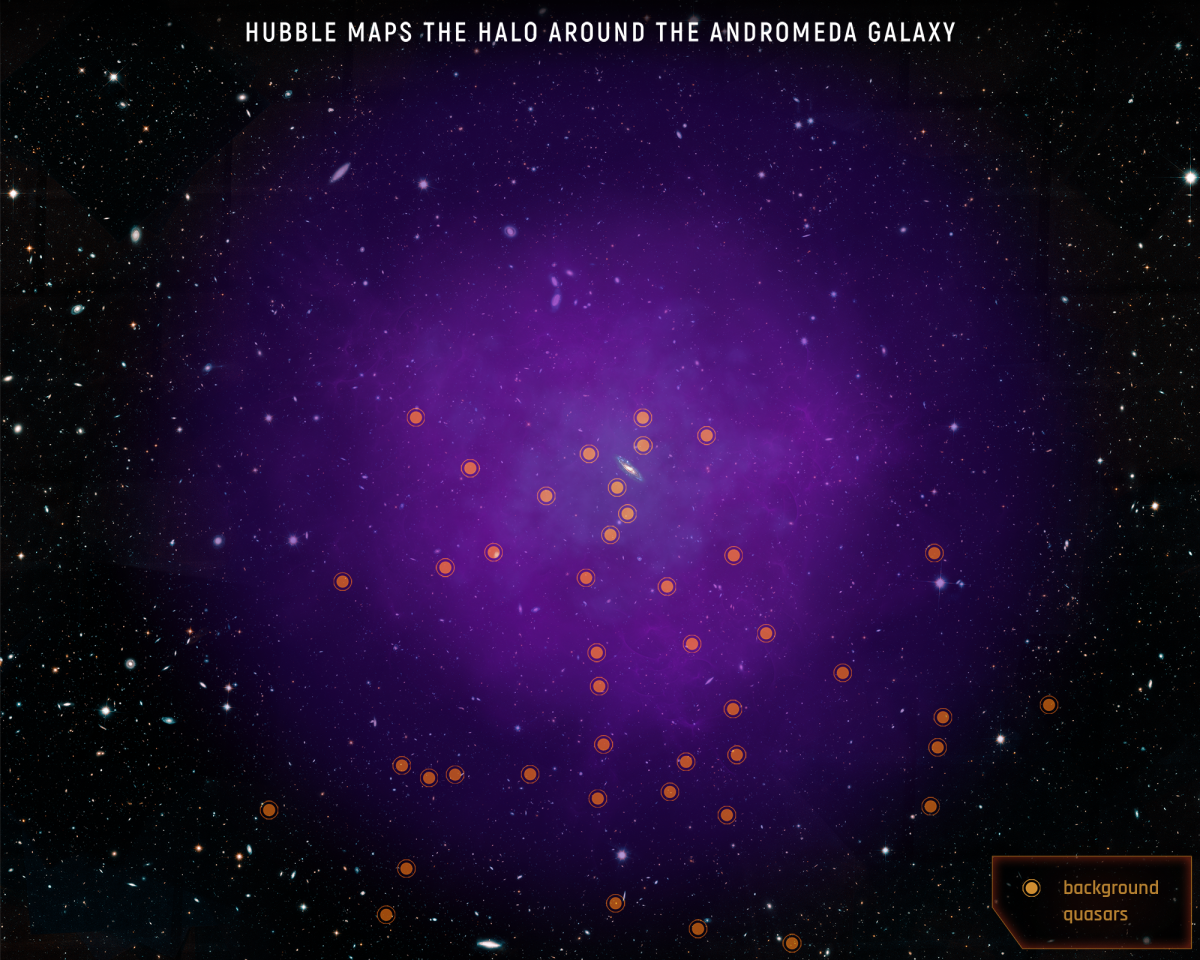There’s more to galaxies than meets the eye, and now astronomers have mapped out a huge invisible region of the galaxy next door. Observations by the Hubble Space Telescope have detailed the size and structure of the gas halo of Andromeda – and found that it’s already bumping up against that of the Milky Way, in advance of a cosmic collision.
Galaxies are usually seen as flat disks of stars, but that’s not the full story. Surrounding most galaxies is a huge spherical envelope of gas and plasma that extends for thousands or even millions of light-years. The trouble is that these structures are very hard to see, because the molecules making it up are so diffuse and don’t give off much radiation.
To study these halos, astronomers instead analyze the way light filters through from much more distant objects. Quasars make a good source since they’re so bright, but for most galaxies only one or two fall in the right line of sight.
But for Andromeda, which is far closer to us than other galaxies, astronomers were able to use 43 quasars scattered around the halo. The team used Hubble’s Cosmic Origins Spectrograph (COS) to study the ultraviolet light of these quasars, and how it’s absorbed by the gas in Andromeda’s halo.

The team found that the halo has a layered structure, with one “shell” of gas nested inside another. The signatures of large amounts of heavy elements were also found floating around out there – a smoking gun for supernova explosions.
“We find the inner shell that extends to about a half million light-years is far more complex and dynamic,” says Nicolas Lehner, lead researcher on the study. “The outer shell is smoother and hotter. This difference is a likely result from the impact of supernova activity in the galaxy’s disk more directly affecting the inner halo.”
The team also found that the outer layers reach much further than previously known. The halo extends 1.3 million light-years from Andromeda, and in some directions it stretches as far as 2 million light-years.
The intriguing thing about that figure is that it means Andromeda’s halo is already beginning to press up against that of the Milky Way. The two galaxies are expected to collide and merge in about four billion years’ time, and it looks like that process is already in the (very, very) early stages.
Since Andromeda is very similar to the Milky Way, this kind of work could help us better understand our home galaxy – after all, it’s tricky to study the Milky Way’s halo from our position inside it.
The research was published in the Astrophysical Journal.
Source: Hubble





